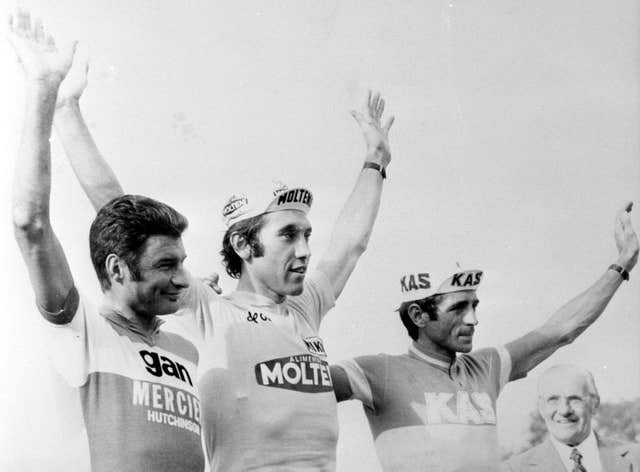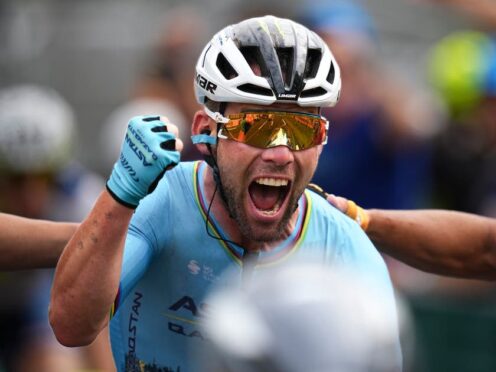Sir Mark Cavendish won stage five of this year’s Tour de France to set a new record of 35 stage wins.
The win sees the Manxman move clear of the great Eddy Merckx to stand alone at the top of the charts, and here, the PA news agency assesses how Cavendish compares to the great Belgian.
Stage wins
Merckx’s record of 34 wins stood alone from 1975, when he claimed his last two stage wins on his penultimate appearance in the race, until Cavendish matched it in 2021.
The Manx Missile drew level with victory on stage 13 in Carcassonne, his fourth win of the 2021 Tour, some five years after he reached 30 with four wins during the 2016 Tour.
Last year was supposed to be Cavendish’s final Tour – he had announced his planned retirement in May – but after his race was abruptly ended by a stage eight crash he returned for an extra season and has made it count.
Cavendish’s best year came in 2009 with six stage wins – two short of Merckx’s eight in both 1970 and 1974, which is tied with Charles Pelissier (1930) and Freddy Maertens (1976) as the all-time record.
He won five stages in both 2010 and 2011, added four in 2008, 2016 and 2021, three in 2012, two the following year and one in 2015.
Cavendish is riding in his 15th Tour compared to Merckx’s seven, but has contested only 32 more stages than Merckx’s 183, winning 35 out of 215 for a strike rate of almost one in six.
After Merckx, the next rider on the list of stage wins is Bernard Hinault with 28 between 1978 and 1986 including seven in 1979. Andre Leducq (25), Andre Darrigade (22) and Nicolas Frantz (20) are the only other riders to reach 20.
Jerseys

The contents of Merckx’s wardrobe, though, are what truly set him apart from Cavendish.
While the British rider finished with the green jersey in 2011 and 2021, Merckx was a serial Grand Tour winner and is viewed among the Tour’s all-time greats.
On his debut in 1969, the Belgian won the yellow jersey as the overall race winner, the green as top sprinter and the King of the Mountains and combination classifications as well as the combativity award – he remains the only rider ever to sweep the major classifications.
He went on to win the yellow jersey in his first five Tour appearances up to 1974, opting not to compete in 1973, and added further green jerseys in 1971 and 1972 and the 1970 mountains classification.
Even on his two remaining appearances, he finished second and sixth in the general classification and he holds the record of 96 days spent in the yellow jersey. Hinault is second on 75, after the disgraced Lance Armstrong’s 83 were wiped from the records.
Cavendish, for all his sprint pedigree including three runner-up finishes in the points, has never finished in the top 100 overall and has completed only seven of his 14 Tours before this year, and he currently sits 170th out of 174 riders still in the race. Not that he cares about that.
